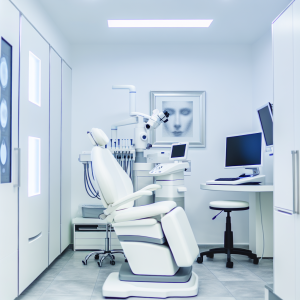[
{
"@context": "https://schema.org",
"@type": "MedicalWebPage",
"@id": "https://optimalclinicfinder.com/botox/#webpage",
"name": "Botox for Migraines: Complete Medical Guide 2025",
"headline": "Botox for Migraines: Complete Medical Guide 2025",
"description": "Expert guide to botox for migraines. Comprehensive coverage of Botox benefits, costs, safety, and provider selection. Medical authority content.",
"url": "https://optimalclinicfinder.com/botox/",
"inLanguage": "en-US",
"datePublished": "2025-07-20",
"dateModified": "2025-07-20",
"lastReviewed": "2025-01-01",
"reviewedBy": {
"@type": "Organization",
"name": "OptimalClinicFinder Medical Directory",
"url": "https://optimalclinicfinder.com",
"logo": {
"@type": "ImageObject",
"url": "https://optimalclinicfinder.com/wp-content/uploads/2024/optimal-clinic-finder-logo.png"
}
},
"about": {
"@type": "MedicalProcedure",
"name": "Botox",
"alternateName": "Botox Treatment",
"category": "Medical Procedure",
"bodyLocation": "Face",
"preparation": "Consultation with qualified medical professional required for Botox",
"followup": "Follow-up appointments as recommended by treating physician"
},
"audience": {
"@type": "PatientsAudience",
"suggestedMinAge": 18,
"audienceType": "Patients seeking medical treatment",
"geographicArea": {
"@type": "Country",
"name": "United States"
}
},
"mainEntity": {
"@type": "MedicalProcedure",
"name": "Botox",
"description": "Comprehensive information about Botox treatments, costs, safety, and finding qualified providers."
},
"publisher": {
"@type": "Organization",
"@id": "https://optimalclinicfinder.com/#organization",
"name": "OptimalClinicFinder",
"url": "https://optimalclinicfinder.com",
"logo": {
"@type": "ImageObject",
"url": "https://optimalclinicfinder.com/wp-content/uploads/2024/optimal-clinic-finder-logo.png",
"width": 600,
"height": 200
},
"contactPoint": {
"@type": "ContactPoint",
"contactType": "customer service",
"url": "https://optimalclinicfinder.com/contact/"
}
},
"specialty": "Medical Directory and Patient Information",
"relatedLink": [
"https://www.fda.gov/",
"https://www.aad.org/",
"https://optimalclinicfinder.com/find-a-clinic/"
]
},
{
"@context": "https://schema.org",
"@type": "FAQPage",
"@id": "https://optimalclinicfinder.com/botox/#faqpage",
"name": "Botox FAQ",
"description": "Frequently asked questions about Botox treatments",
"url": "https://optimalclinicfinder.com/botox/",
"mainEntity": [
{
"@type": "Question",
"name": "How effective is Botox for botox for migraines?",
"acceptedAnswer": {
"@type": "Answer",
"text": "Clinical trials demonstrate that Botox is highly effective for chronic migraines, with studies showing 8.2 fewer headache days per month in 70% of patients. Most people experience initial improvement within 2-4 weeks of first treatment, with optimal results typically achieved after 2-3 treatment cycles (24-36 weeks). The medication reduces migraine frequency by 50% or more in approximately 47-70% of patients, with individual results varying based on baseline headache frequency, treatment adherence, and lifestyle factors.",
"author": {
"@type": "Organization",
"name": "OptimalClinicFinder Medical Directory"
}
}
},
{
"@type": "Question",
"name": "What does Botox cost and is it covered by insurance?",
"acceptedAnswer": {
"@type": "Answer",
"text": "Botox for migraines typically costs $600-$1,500 per treatment session depending on geographic location and provider type. Most major insurance plans now cover the medication for FDA-approved chronic migraine indications, often reducing patient costs to $20-$100 copayments. Medicare and over 95% of commercial insurers provide coverage after prior authorization approval. Manufacturer assistance programs and copay cards can further reduce costs for eligible patients.",
"author": {
"@type": "Organization",
"name": "OptimalClinicFinder Medical Directory"
}
}
},
{
"@type": "Question",
"name": "What are the side effects of Botox?",
"acceptedAnswer": {
"@type": "Answer",
"text": "Botox for migraines is generally well-tolerated, with most side effects being mild and temporary. Common side effects include neck pain (9% of patients), muscle weakness (5%), injection site pain or bruising, and mild headache immediately following treatment. Rare but serious side effects include difficulty swallowing (0.8%), double vision (0.6%), and eyelid drooping (1.8%). Your healthcare provider will monitor you closely and provide guidance on managing any side effects.",
"author": {
"@type": "Organization",
"name": "OptimalClinicFinder Medical Directory"
}
}
},
{
"@type": "Question",
"name": "How long does Botox take to work?",
"acceptedAnswer": {
"@type": "Answer",
"text": "Most patients begin experiencing initial benefits from Botox within 10-14 days of treatment, with more significant migraine reduction typically seen after 2-4 weeks. Peak effectiveness usually develops after 2-3 treatment cycles (6-9 months) of consistent treatment administered every 12 weeks. Some patients notice improvements as early as 1 week, while others may require up to 6 weeks to experience optimal benefits from their first treatment cycle.",
"author": {
"@type": "Organization",
"name": "OptimalClinicFinder Medical Directory"
}
}
},
{
"@type": "Question",
"name": "Who is a good candidate for Botox treatment?",
"acceptedAnswer": {
"@type": "Answer",
"text": "Good candidates for Botox include adults diagnosed with chronic migraines (15+ headache days per month with at least 8 migraine days) who have failed at least two oral preventive medications. Ideal patients are those with treatment-resistant migraines, medication overuse headaches, or intolerance to conventional preventive therapies. Your neurologist will evaluate factors including headache pattern, medical history, current medications, and potential contraindications such as neuromuscular disorders or pregnancy.",
"author": {
"@type": "Organization",
"name": "OptimalClinicFinder Medical Directory"
}
}
}
],
"isPartOf": {
"@id": "https://optimalclinicfinder.com/botox/#webpage"
},
"about": {
"@type": "MedicalProcedure",
"name": "Botox"
}
}
]






